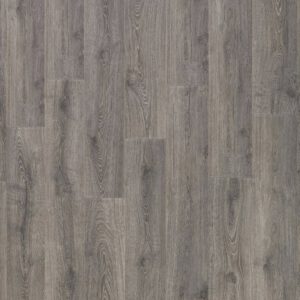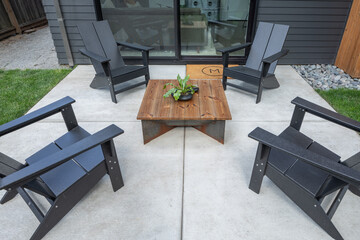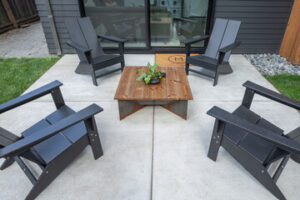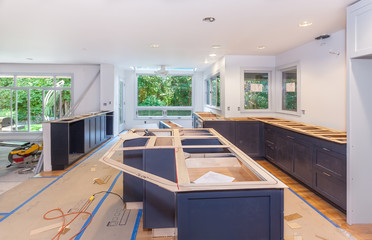Master Affiliate Profits Review is a cutting-edge system that revolutionizes the way we do affiliate marketing. Designed by industry veterans John Thornhill and Omar Martin, this powerful platform empowers its members with comprehensive training and resources.
The platform’s ingenious one-link solution allows you to promote multiple offers without having to build your own lead funnels. This unique approach to affiliate marketing makes MAP stand out from its competitors.

The Master Affiliate Profits (MAP) platform is engineered for affiliate success. It offers a hands-free sales system that handles the heavy lifting. Its automated ecosystem and conversion strategies will help beginners and veterans alike see results. The platform’s members also earn on every product and upgrade sold, for life!
Founded by renowned marketers Omar Martin, Melinda Martin, and John Thornhill, MAP unveils the secret recipe to top affiliate profits. Its powerful features streamline campaigns and automate traffic generation, delivering a long-term super funnel for affiliate success.
Unlike other platforms, MAP doesn’t use cookie-cutter promotions or shady upsells that steal leads. Its ingenious one-link solution prominently featured on its member dashboard allows affiliates to track their own referrals and earnings. This allows for a more transparent experience, which in turn empowers users to generate income, build their list, and optimize results.
In addition, MAP’s high-tech funnel is designed to drive traffic from all sources and convert visitors into buyers. Its custom-built landing page is optimized for conversion, and its advanced analytics allow marketers to track their progress and analyze the data. Its unique approach to affiliate marketing is unrivaled in the industry.
Unlike other platforms, MAP’s team provides comprehensive training and support to its members. Dedicated coaches and community forums are available for help. The platform also offers a variety of valuable bonuses that can boost your chances of succeeding as an affiliate. These include a free membership to the world’s best affiliate networks, quality training, and exclusive commission bonuses. In addition to these bonuses, MAP also offers personalized coaching and support. This is the perfect way to learn the skills and tactics you need to succeed in affiliate marketing.
MAP’s One-Link Solution
Unlike traditional affiliate programs that require multiple steps and multiple platforms, MAP enables you to promote any offer using a single personalized link. The platform handles inserting the leads into the ecosystem sales funnel and takes care of all the other tasks required for commissions to be earned, including promoting products, tracking, product promotion and daily email dispatch. MAP streamlines affiliate marketing and automates traffic and monetization in order to maximize commissions and growth.
This unique one-link solution creates a hands-off foundation for earning commissions, giving you the freedom to focus on other aspects of your business. Combined with the ecosystem’s automated promotions, this gives you a complete affiliate marketing solution. MAP’s team of seasoned experts and industry veterans is committed to continually improving the platform in order to provide an outstanding experience for both beginners and veteran marketers alike.
In addition to the unified ecosystem, MAP also incorporates advanced affiliate marketing training that transforms members into top-tier marketers. Its structured curriculum and live coaching sessions replace guesswork with proven strategies for success. The membership also includes access to an extensive library of free traffic that enables you to increase your chances of commissions.
MAP’s team of seasoned professionals, led by renowned marketer John Thornhill, is committed to empowering their affiliates. The program’s streamlined onboarding process eliminates roadblocks for newcomers, allowing them to start earning commissions almost immediately compared to the weeks and even months it takes with most other affiliate programs. MAP’s high-tech funnel ensures that your traffic sees the highest converting pages through constant A/B testing. This allows you to earn on every sale within the ecosystem – and even beyond it with a recurring commission system that pays out on third-party purchases by your referrals.
MAP’s High-Tech Funnel
MAP operates on the principle of simplifying and optimizing affiliate marketing. Unlike other platforms, it streamlines affiliate promotions and automates traffic, giving users more time to focus on product promotion and training. MAP also provides ongoing commissions, making it a lucrative option for both beginners and seasoned marketers.
The platform’s key advantage is its high-tech funnel, which automatically turns visitors into leads and leads into buying customers. MAP’s lead generation nano flywheel system leverages multiple affiliate-marketing channels to deliver the right message to each visitor. The MAP platform handles the entire funnel, from product promotion to daily email dispatch. This means that MAP’s members only have to promote one single trackable link, and the platform takes care of everything else.
A major part of the MAP ecosystem is the PLATINUM membership. PLATINUM members receive free access to MAP’s 175,000+ subscriber network, and can earn commissions on any additional traffic buys they make. This creates a hands-off revenue source that is constantly being optimized, and allows MAP members to make more money than traditional affiliate programs.
Another highlight of the MAP platform is its extensive affiliate marketing training. The program offers a structured curriculum valued at over $1,000 that aims to transform members into top-tier marketers. The curriculum covers affiliate training, advanced traffic tactics, and live coaching sessions.
Master Affiliate Profits is a game-changer for affiliate marketers. The MAP platform combines all the necessary tools and training into one cohesive experience, eliminating barriers to success for new and seasoned marketers alike. Its commitment to simplicity, efficiency, and education makes it the ideal solution for marketers looking to build a sustainable income stream. Its unique system ensures that affiliates earn while they learn, transforming the affiliate marketing journey into a smooth and profitable path.
MAP’s Member Dashboard
MAP’s member dashboard makes it easy to track the progress of your affiliate marketing campaigns. The dashboard features comprehensive performance metrics, including commissions, leads and clicks. It also displays traffic statistics and top performing campaigns. The dashboard is updated regularly to show the most up-to-date data. Moreover, it offers multiple filter options to display specific performance metrics and data. You can also customize the layout of your dashboard to suit your needs.
Unlike other affiliate programs, MAP’s ecosystem automates much of the work that goes into earning affiliate commissions. This includes attracting visitors, selling products and following up through email. Its self-contained system is designed to maximize profits for its members. It also ensures that you earn commissions on third-party purchases made by your referrals.
Another unique feature of MAP is its affiliate training. Its structured curriculum aims to transform beginners into top-tier affiliate marketers. The platform uses advanced traffic tactics, specialized workshops and live coaching sessions to teach members how to drive more revenue. It also replaces guesswork with proven strategies for affiliate success.
With MAP, you can generate traffic and build a list simultaneously. Its one-link solution eliminates the need for multistep promotions and customized lead funnels. Its high-tech funnel automatically tests converting pages for each visitor and tracks their results. Moreover, it automatically dispatches daily emails to your leads. This allows you to earn commissions on all future sales that take place within the MAP ecosystem.
MAP’s member dashboard is easy to navigate and is incredibly user-friendly. It is also a complete tool for creating and tracking your own email campaigns. You can even set up autoresponders and connect them with MAP’s system for more automated income. Its user-friendly interface is also backed by a dedicated support team.
MAP’s Team
The founders’ reputation and commitment to training further bolster MAP’s appeal. The automated ecosystem and simplified promotions reduce barriers for beginners, while perpetual commissions provide a passive earnings stream without the need for repeated promotions. The platform also provides comprehensive affiliate marketing tools and training to create expertise beyond theory, enabling members to maximize their potential for high-income.
Unlike most competing platforms, MAP offers a one-link solution and integrated tools for all aspects of affiliate marketing. Combined, these features make the platform easy to learn and manage, even for a newbie with limited technical skills. The platform also provides hands-free income through free traffic distributions, leveraging the founders’ extensive subscriber base to deliver leads and sales.
Other standouts include MAP’s comprehensive affiliate training, which replaces guesswork with proven strategies for success. The training includes basic affiliate marketing training, beginner income lessons, and advanced income growth lessons. In addition, MAP’s team conducts live coaching sessions to answer questions and guide members.
The MAP team’s experience and commitment to innovation set the platform apart from competitors. The platform’s automation, tracking, and ever-expanding tools are designed to streamline the affiliate marketing process. Combined with the founders’ industry-leading reputation and commitment to training, the platform has the potential to unlock a new level of affiliate marketing success for its members.
















